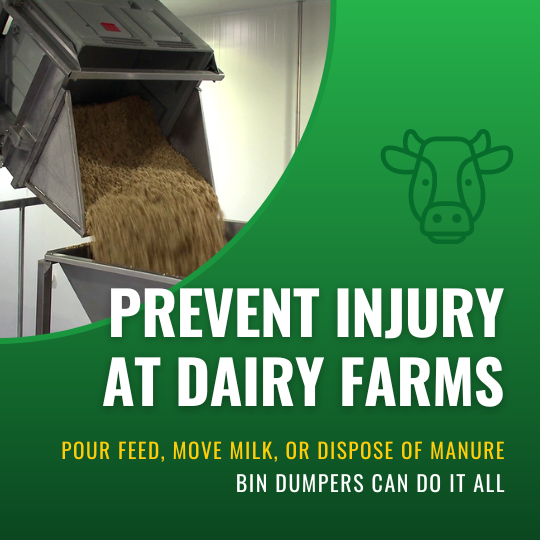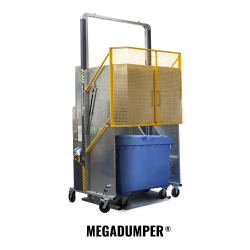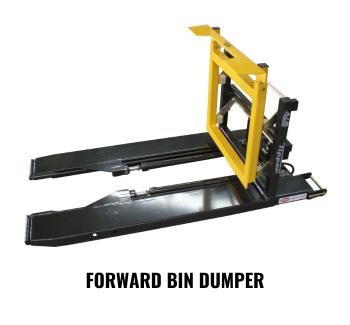We use cookies to make your experience better. To comply with the new e-Privacy directive, we need to ask for your consent to set the cookies. Learn more.
Preventing Musculoskeletal Disorders at Dairy Farms

Dairy cows need about 90 pounds of food and between 25 and 50 gallons of water every day, according to the American Dairy Association North East. In exchange for these daily necessities, milk cows produce around six or seven gallons of milk per day — as well as 2.5 cubic feet of manure.
Someone has to handle all of that material. Workers must pour feed, dispose of manure, and collect milk, and people doing these jobs, both in developing nations and in our own backyard, face serious ergonomic health risks.
A January 2017 study in the International Journal of Occupational & Environmental Medicine stated that, "In most dairy farms, workers carry high risk of developing work-related musculoskeletal disorders. Therefore, taking corrective measures and implementing ergonomic interventions are essential in this agricultural sector."
But what corrective measures can help protect these workers? To find that out, we need to know what workplace tasks carry the greatest risk. Luckily, that's exactly what the researchers were after.
The research team photographed workers at a busy dairy farm in Iran. Then they analyzed the photographs according to the Rapid Entire Body Assessment (REBA), a tool that systematically evaluates postures and movements to assign an overall score. That final score indicates a greater or lesser risk of developing musculoskeletal disorders based on the movement in question. Here are the three most dangerous tasks, from an ergonomic perspective, found on dairy farms:
1. Collecting and Disposing of Manure
Without automated equipment, staff must collect manure in wheelbarrows, run it to the disposal area, and shovel it out again. This places extreme wear on upper arms and the trunk of the body, up to and including lower back pain.
2. Pouring Feed into Individual Feed Bags

Workers at dairy farms bag shipments of feed (or corn that's milled on-site) for transport to feeding stalls. Shoveling feed into bags places stress all over the body, leading to musculoskeletal injuries to the legs, trunk, and arms.
3. Transporting Milk from Milking Machines to Buckets
Milk has to get from milking machines into tanks somehow. No matter how farmers complete this task, it involves lifting heavy containers of liquid and emptying them into other containers or, finally, tanks. Any time a worker has to lift and empty a heavy container, their risk of injury will increase.
These risky jobs explain why another study found that the risk of musculoskeletal disorders was more than 50 percent higher for farmers than workers in other fields. The more important question is: What can we do to improve ergonomics at dairy farms?
All three of the most dangerous tasks listed above involve lifting and tipping containers; essentially, emptying containers. By automating the action of lifting and tipping, dairy farmers can protect staff from many of the ergonomic risk factors found on the job.
MegaDumper Bin Dumpers, which are already a mainstay in the warehousing industry, would prevent the injuries associated with handling manure, feed, and milk. A single device could do away with all three of the most dangerous tasks on dairy farms.

The MegaDumper (available from Solus Group) uses a unique lift-and-tip motion to empty industrial containers without shifting the center of gravity. They feature a 1,300-pound lifting capacity and a galvanized steel frame that's suitable for long-term outdoor use. Custom cradles ensure that your containers will fit, no matter what.
For dairy farmers who collect manure with outdoor forklifts, the Forward Bin Dumper attachment tilts forward 135 degrees to completely empty any container.
References:
"Dairy Facts." UAEX. University of Arkansas Division of Agriculture Research & Extension, n.d. PDF. 22 June 2017.
"Liquid Manure Storage Ponds, Pits, and Tanks." Extension. United States Cooperative Extension System, 27 Oct. 2015. Web. 22 June 2017.
"Milk - From Cow to You." DairySpot. American Dairy Association North East, n.d. Web. 22 June 2017.
Taghavi, Sayed Mohammad, et al. "Risk Factors for Developing Work-Related Musculoskeletal Disorders during Dairy Farming." International Journal of Occupational & Environmental Medicine, vol. 8, no. 1, Jan. 2017, pp. 39-45. EBSCOhost, 22 June 2017.
